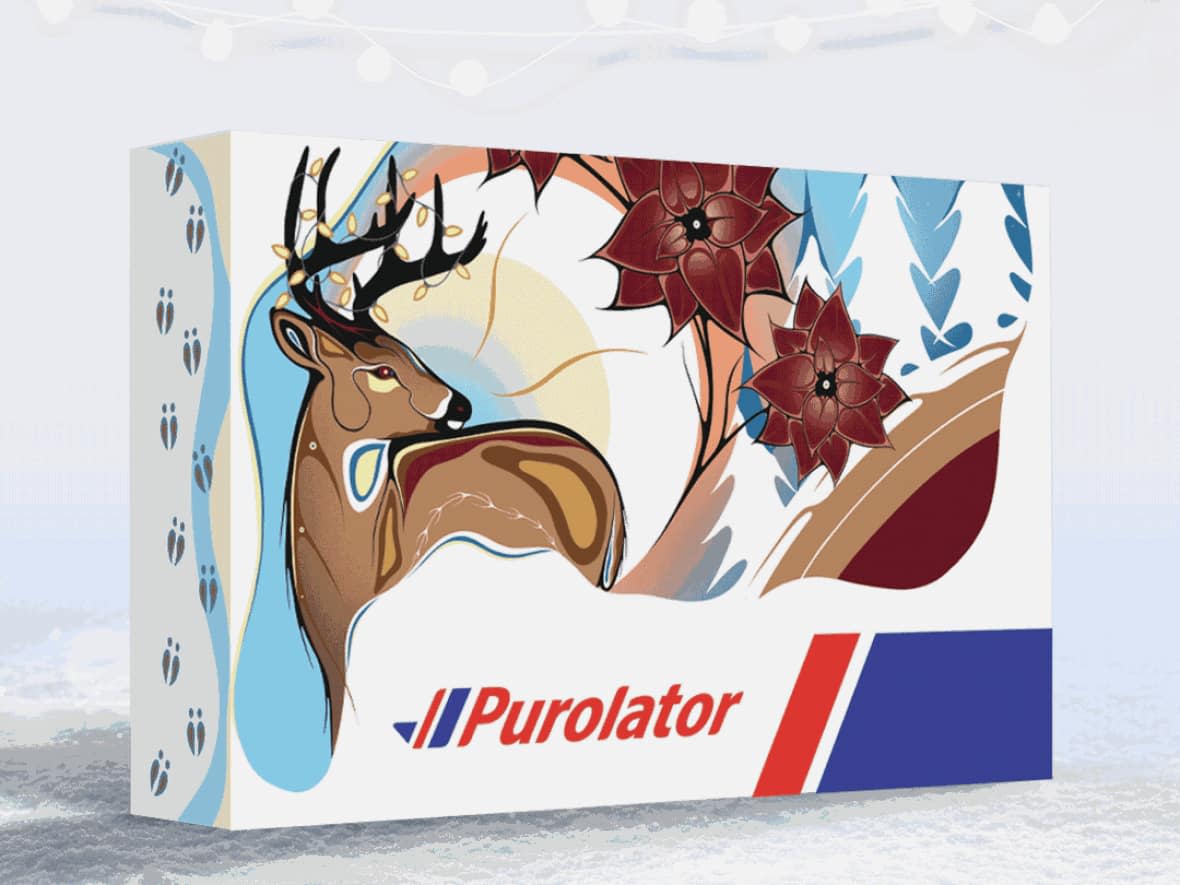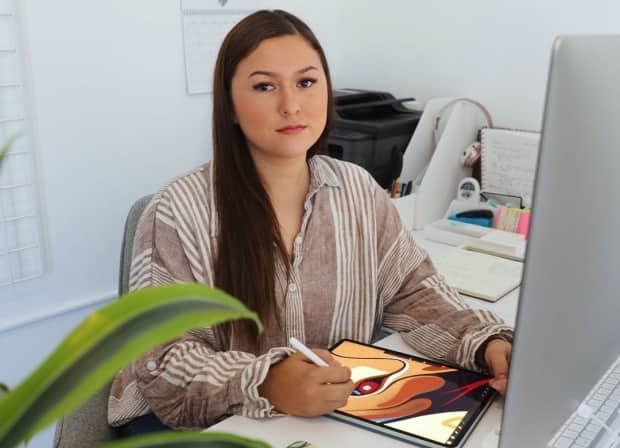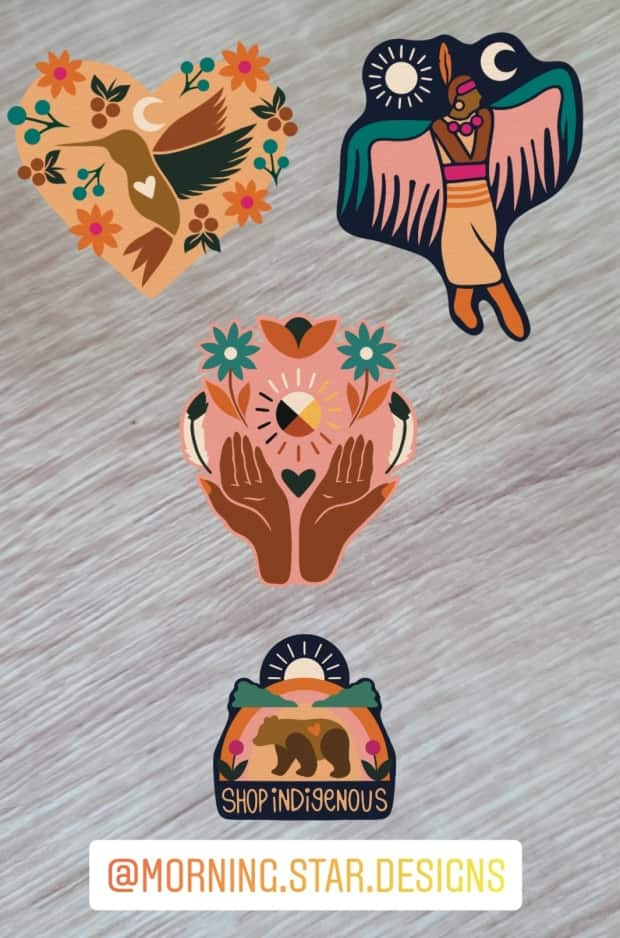Indigenous artists working with companies like Instagram, Purolator say representation is important

Corporations are commissioning Indigenous art, and that's not only good for the artists, but good for business as well, according to one business scholar.
Emily Kewageshig, an Anishinaabe artist from Saugeen First Nation in Ontario, recently teamed up with courier Purolator to design a limited-edition holiday box.
"A lot of people are so happy to be seeing my work more mainstream," said Kewageshig.
Kewageshig is a painter in the Woodland style created by artist Norval Morisseau. She depicted deer in a winter landscape and poinsettia flowers on her holiday box design. She said she hopes to invoke a sense of warmth and family with the images.

She said she believes representation is important.
"Indigenous artists … have work that should be shared, that needs to be shared, not only mine, but so many other amazing young artists that are coming up right now," she said.
Kewageshig also designed a CBC logo for the first National Day for Truth and Reconciliation this year.
'Creating a sacred space'
Philip Cote, who is Shawnee, Lakota, Potawatomi, Ojibway and Algonquin, designed artwork this summer for the new Radio-Canada building in Montreal.
Cote painted a mural for an interior staircase. Due to COVID-19 protocols, the work was done at his studio on an adhesive paper that was then applied to the surface of the walls.
The painting depicts a maple tree with animals in the popular Woodland style.
"The maple tree represents that fiery colour when fall comes," said Cote, from Deer Moose Point First Nation in Ontario.
"It reminded me of a fire. So my first thought was, I'm going to create an Indigenous understanding of life."

Cote said his art has the chance to create an important space, especially youth.
"I'm creating a sacred space for everyone," he said.
"I'm also creating a sacred space for the young people who need to see a reflection of themselves to know that this is their home, too."
Like Kewageshig, Cote works with the Woodland style. His work can be found in many places in Toronto, where he resides.
Instagram stickers
Alanah Astehtsi Otsistohkwa (Morningstar) Jewell from Oneida Nation of the Thames in Ontario was approached by Instagram to make digital stickers as part of Native American Heritage Month.
The stickers can be found when an Instagram user posts a story and uses the stickers option, with various virtual images available to adorn their posts.

"I only really started illustrating two years ago," she said.
"A lot of people go to school and want to do this as a goal … so I think that I'm an exception and it's hard for me to wrap my head around this."
Jewell was previously in university, intending to go to law school, but she had a change of heart.
"I think it just shows that if your heart's in the right place, and the message you're trying to spread is a good message, I think that you can really do anything you put your mind to," she said.

Jewell hopes by her work being shared widely, she is setting a precedent and fulfilling a responsibility to pave the way for future artists — especially BIPOC and youth.
'The inclusivity sends a message'
Working with Indigenous creators shows an investment in the Indigenous community that could create more business, according to one business scholar.
"The inclusivity sends a message [that] Indigenous people are valued here and we want to showcase that," said Jason Bird, lecturer and program administrator for Indigenous Business and Public Administration with the First Nations University of Canada in Regina, in an email.
"This could mean more investment from the disposable income of Indigenous consumers, who may trust that company more than their competitors."
Bird said recognizing "authentic," "real deal" Indigenous artists is important.
"They're not trying to capitalize on some craze — this is their artwork, this is what they do," he said.
"I think the incorporation of that is important for businesses in general so that they represent us as well."


